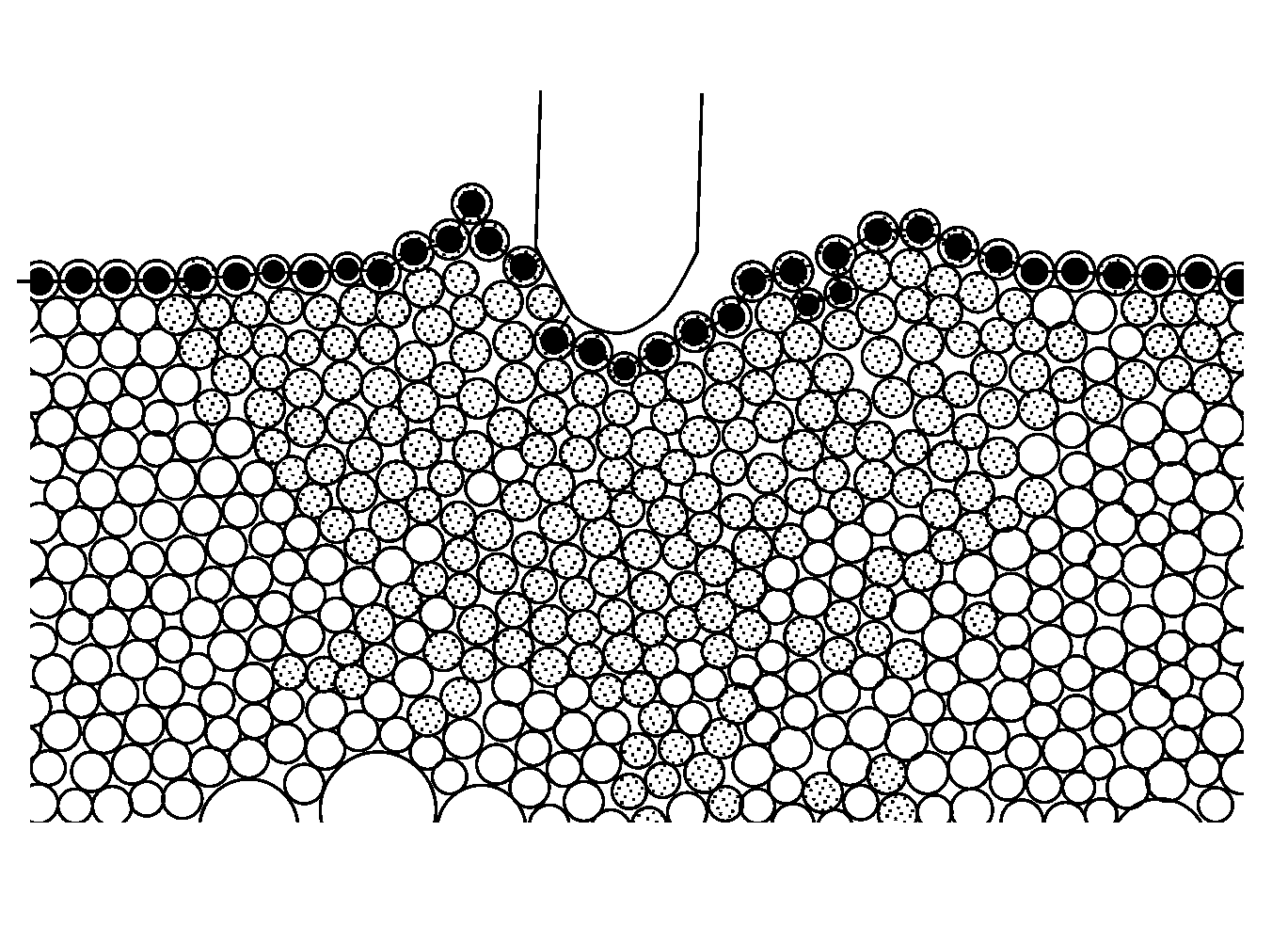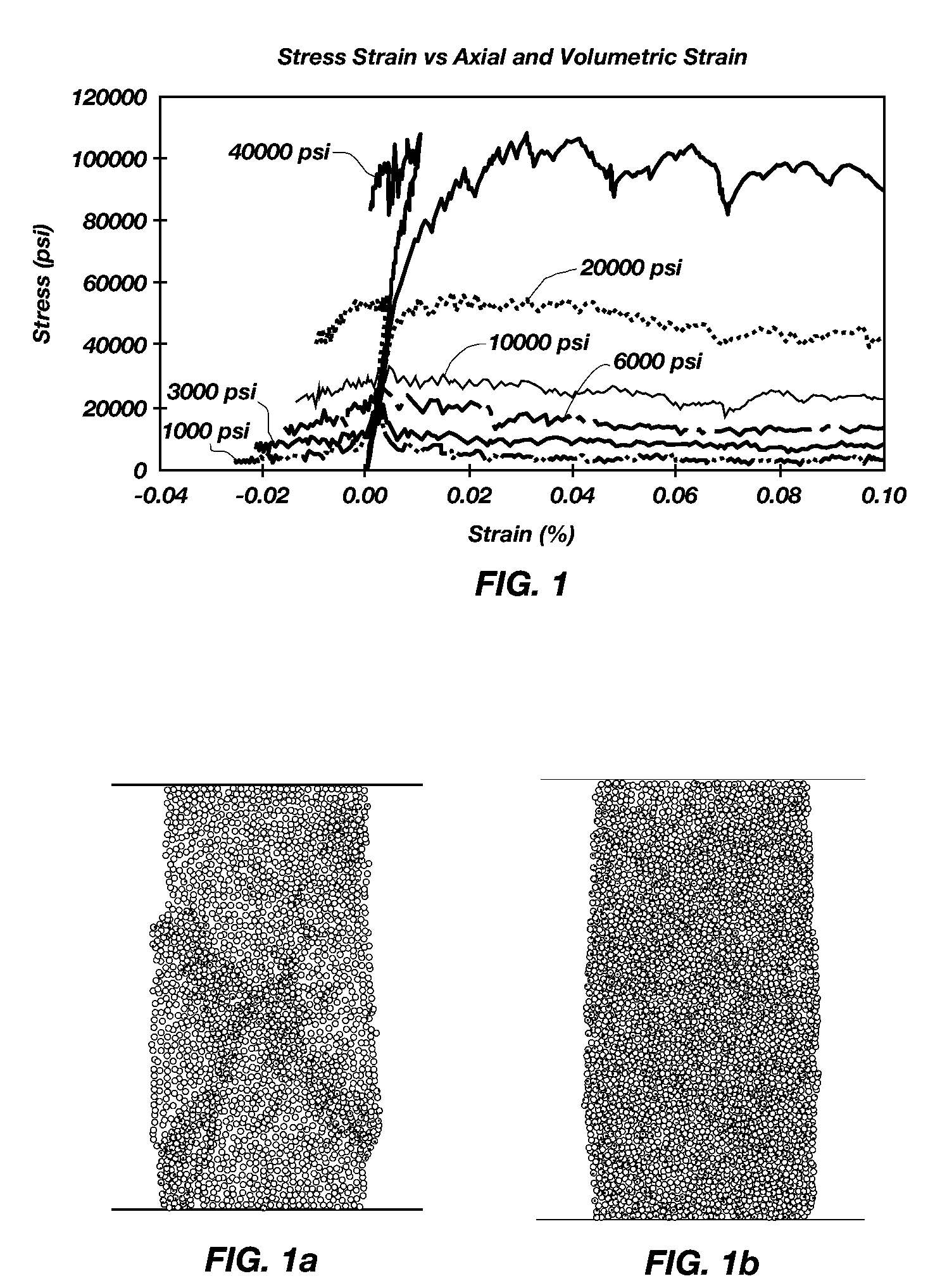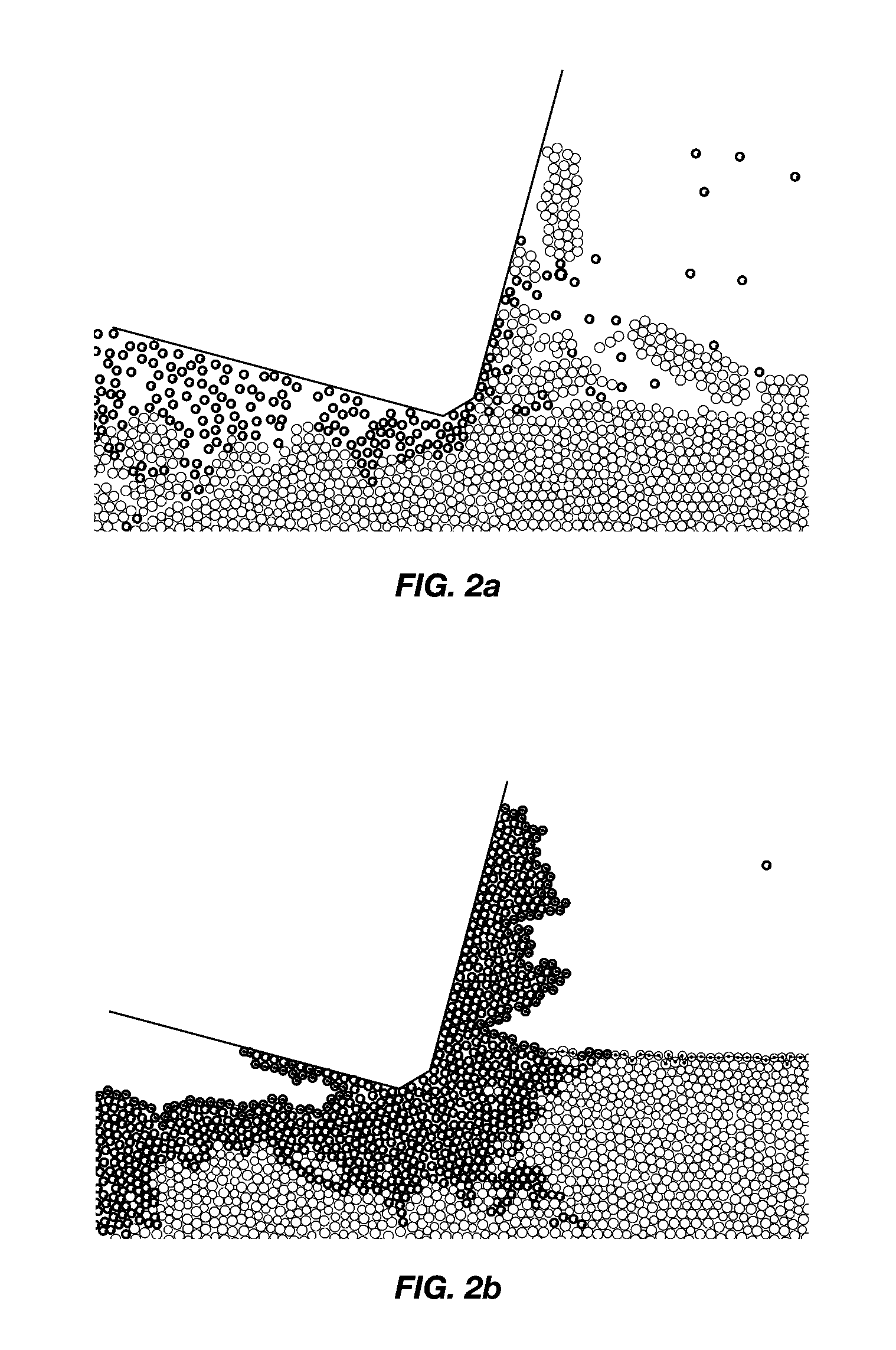Discrete element modeling of rock destruction under high pressure conditions
a technology of rock and high pressure, applied in the field of discrete element modeling, can solve the problem that the bulk of the energy expended is consumed by detritus
- Summary
- Abstract
- Description
- Claims
- Application Information
AI Technical Summary
Benefits of technology
Problems solved by technology
Method used
Image
Examples
Embodiment Construction
Discrete Element Modeling of Rock Cutting
[0026]Discrete Element Modeling (DEM) materials are created by establishing an equivalence between the mechanical response of selected lab tests and DEM models of the same lab tests. D. O. Potyondy and P. A. Cundall, 2004, A bonded-particle model for rock, Int. J. Rock Mech. Min. Sci. 41(8), pp. 1329-1364. Success in the DEM method requires that appropriate lab tests and mechanical parameters be chosen to calibrate the DEM material. This, of course, presupposes that appropriate lab tests and mechanical parameters may be selected to characterize drilling under pressure. A common practice in the mining industry is to establish an equivalence in: density, elastic modulus, Poisson ratio, Brazilian strength, UCS and N. However, none of these equivalencies describe the inelastic response of the rock.
[0027]Rock cutting under pressure is very different from rock cutting at atmospheric conditions. At atmospheric conditions, a cutter drives long cracks...
PUM
 Login to View More
Login to View More Abstract
Description
Claims
Application Information
 Login to View More
Login to View More - R&D
- Intellectual Property
- Life Sciences
- Materials
- Tech Scout
- Unparalleled Data Quality
- Higher Quality Content
- 60% Fewer Hallucinations
Browse by: Latest US Patents, China's latest patents, Technical Efficacy Thesaurus, Application Domain, Technology Topic, Popular Technical Reports.
© 2025 PatSnap. All rights reserved.Legal|Privacy policy|Modern Slavery Act Transparency Statement|Sitemap|About US| Contact US: help@patsnap.com



